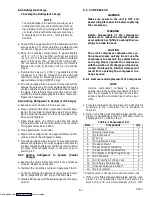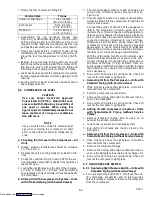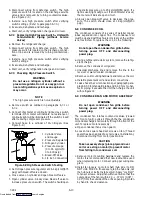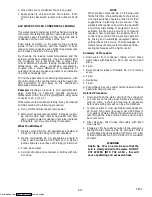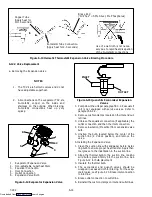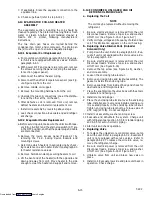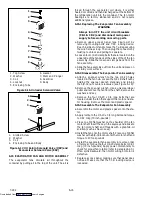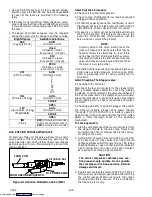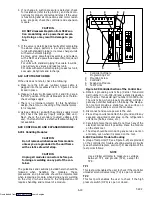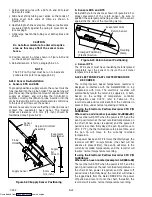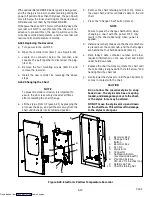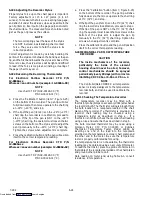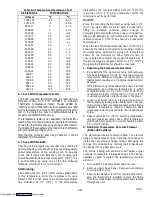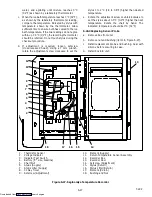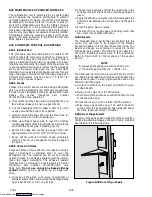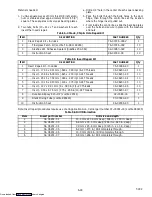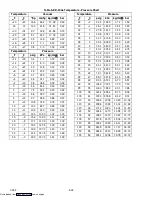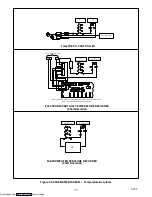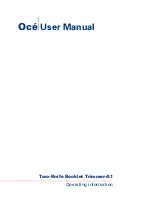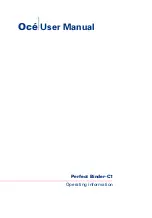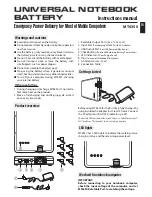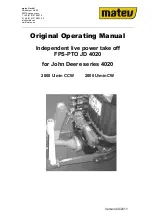
6-21
T-292
6.21 TEMPERATURE SENSOR SERVICE
Procedures for service of the Return Recorder, Return
Temperature, Supply Recorder, Supply Temperature,
Ambient, Defrost Temperature, Compressor Discharge
and Compressor Suction temperature sensors are
provided in the following sub paragraphs.
6.21.1 Sensor Checkout Procedure
To check a sensor reading, do the following:
a. Remove the sensor and place in a 0
_
C (32
_
F) ice-wa-
ter bath. The ice-water bath is prepared by filling an
insulated container (of sufficient size to completely
immerse bulb) with ice cubes or chipped ice, then fill-
ing voids between ice with water and agitating until
mixture reaches 0
_
C (32
_
F) measured on a labora-
tory thermometer.
b. Start unit and check sensor reading on the control
panel. The reading should be 0
_
C (32
_
F). If the read-
ing is correct, reinstall sensor; if it is not, continue with
the following.
c. Turn unit OFF and disconnect power supply.
d. Refer to paragraph 6.20 and remove controller to gain
access to the sensor plugs.
Table 6-2 Sensor Temperature/Resistance Chart
(+/--.002%)
Temperature
Resistance
_
_
_
_
C
_
_
_
_
F
(Ohms)
C
F
AMBS, CPSS,
DTS, RTS, RRS,
STS, SRS
CPDS
--30
--22
177,000
1,770,000
--25
--13
130,400
1,340,000
--20
--4
97,070
970,700
--15
5
72,900
729,000
--10
14
55,330
553,000
--5
23
43,200
423,300
0
32
32,650
326,500
5
41
25,390
253,900
10
50
19,900
199,000
15
59
15,700
157,100
20
68
12,490
124,900
25
77
10,000
100,000
30
86
8,060
80,600
35
95
6,530
65,300
40
104
5,330
53,300
45
113
4,370
43,700
50
122
3,600
36,000
55
131
2,900
29,000
60
140
2,490
24,900
65
149
2,080
20,800
65
158
1,750
17,500
e. Using the plug connector marked “EC”, that is con-
nected to the back of the controller, locate the sensor
wires (RRS, RTS, SRS, STS, AMBS, DTS, CPDS
OR CPSS as required). Follow those wires to the con-
nector and using the pins of the plug, measure the
resistance. Values are provided in Table 6-2.
Due to the variations and inaccuracies in ohmmeters,
thermometers or other test equipment, a reading
within 2% of the chart value would indicate a good
sensor. If a sensor is defective, the resistance read-
ing will usually be much higher or lower than the resis-
tance values given.
6.21.2 Sensor Replacement
a. Turn unit power OFF and disconnect power supply.
b. Cut cable 5 cm (2 inches) from shoulder of defective
sensor and discard the defective probe only. Slide the
cap and grommet off a bulb type sensor and save for
reuse.
Do not cut the grommet.
c. Cut one wire of existing cable 40 mm (1-1/2 inch)
shorter than the other wire.
d. Cut one replacement sensor wire (opposite color)
back 40 mm (1-1/2 inch). (See Figure 6-21.)
e. Strip back insulation on all wiring 6.3 mm (1/4 inch).
Sensor
40 mm (1 1/2 inch)
6.3 mm (1/4 inch)
Mounting Stud Type
Sensor
40 mm (1-1/2 inches)
6.3 mm (1/4 inch)
Bulb Type
Figure 6-21 Sensor Types
f. Slide a large piece of heat shrink tubing over the
cable, and place the two small pieces of heat shrink
tubing, one over each wire, before adding crimp fit-
tings as shown in Figure 6-22.
Sensor (Typical)
Cable
Heat Shrink
Tubing (2)
Large Heat Shrink
Tubing (1)
Figure 6-22 Sensor and Cable Splice
g. If required, slide the cap and grommet assembly onto
the replacement sensor.
h. Slip crimp fittings over dressed wires (keeping wire
colors together). Make sure wires are pushed into
crimp fittings as far as possible and crimp with crimp-
ing tool.
Downloaded from
Summary of Contents for 69NT40-531 Series
Page 2: ...Downloaded from ManualsNet com search engine ...
Page 4: ...Downloaded from ManualsNet com search engine ...
Page 8: ...Downloaded from ManualsNet com search engine ...
Page 16: ...Downloaded from ManualsNet com search engine ...
Page 57: ...Downloaded from ManualsNet com search engine ...
Page 104: ...Downloaded from ManualsNet com search engine ...
Page 106: ...7 2 T 292 Figure 7 2 SCHEMATIC DIAGRAM Downloaded from ManualsNet com search engine ...

